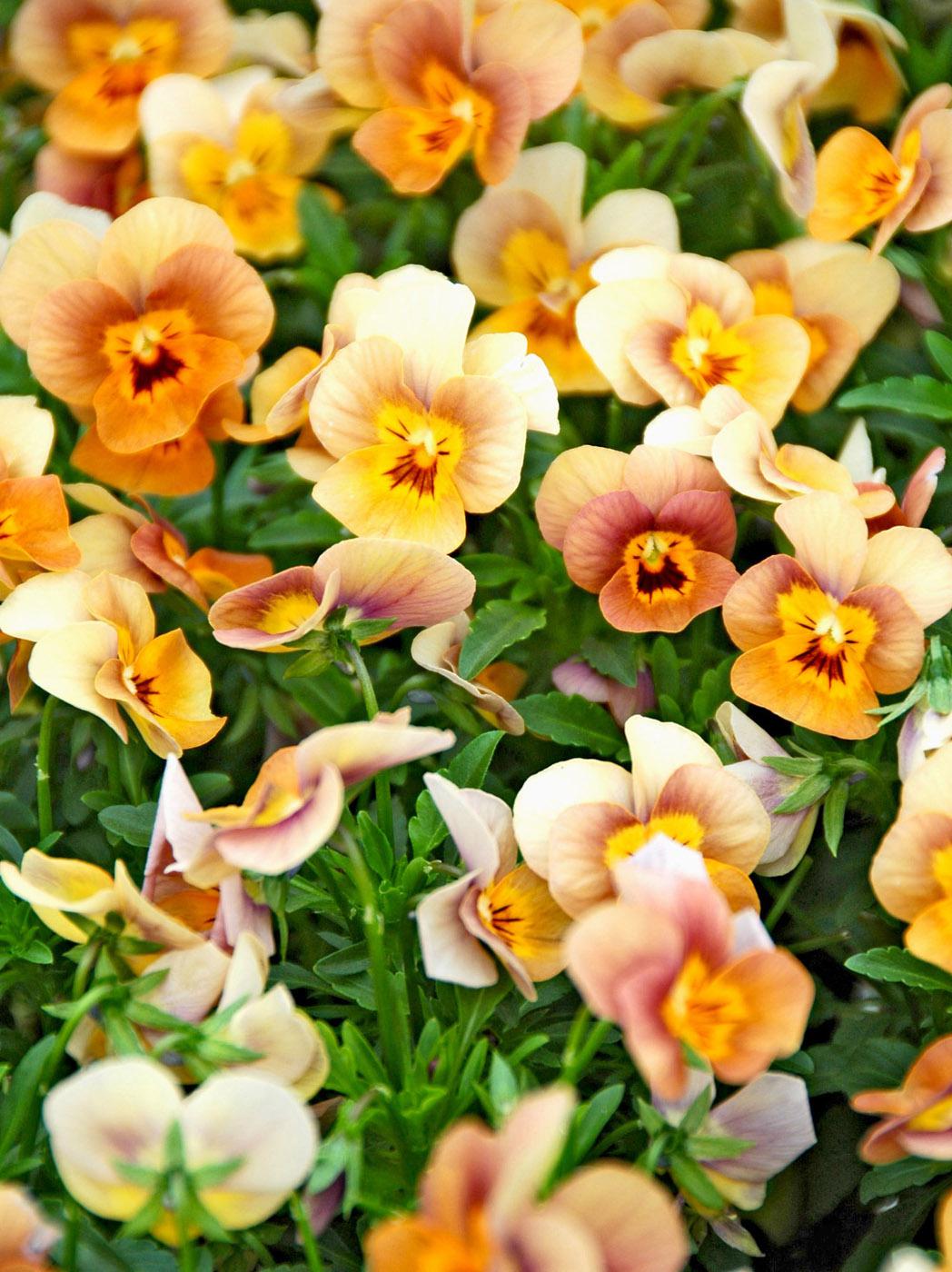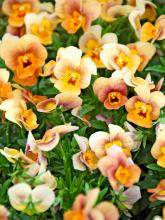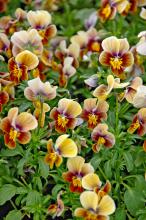Information Possibly Outdated
The information presented on this page was originally released on October 11, 2007. It may not be outdated, but please search our site for more current information. If you plan to quote or reference this information in a publication, please check with the Extension specialist or author before proceeding.
Don't overlook violas in cool-season gardens
By Norman Winter
MSU Horticulturist
Central Mississippi Research & Extension Center
Some unbelievably colored violas have come on the market in recent years with little notice. Most gardeners pass up these rugged, cool-season performers in favor of their larger cousins, the pansies.
The viola is the wild ancestor of the pansy, and it is even called wild pansy in some countries. In addition to the names viola and wild pansy, we also know it as Johnny jump-up.
The Angel series has some of the most amazing selections you'll ever see with 24 colors and another nine mixes. These include Angel Lilac Glow, a light lavender-lilac with a blotched face and a warm bronze glow emanating from the flower center.
My favorite is the Angel Blue Berry Glow, which is actually so unique it is hard to describe. This viola has a purple wing with a blotched face surrounded by gold and a bronze-brown glow across the lower petals.
Also in the series is the Angel Tiger Eye that is a golden yellow with blotch and a face covered in scores of lines streaking away from the center. I have to mention one more rare color in the group called Angel Terra-cotta. The catalog simply does not do it justice. This viola has a bright orange face, but as you move outward, you see various shades of terra-cotta with slight hints of mauve.
Another exquisitely colored series called Velour boasts 20 colors and two mixes. Velour Scented is a mix that includes the most fragrant selections. One of my favorite selections is called Velour Blue Bronze. This variety has a purple wing and bronze lower petals with a blotch.
The last one I want to mention is Velour Frosted Chocolate. The name alone should tell you this is a special viola. This variety is chocolate brown with a yellow face and a frosted wing. It has a slightly small flower, but it makes up for its size by producing them in quantity.
The bronzes or browns in these selections are so rare and beautiful, you will want to plant some in containers near outdoor areas you frequent during the cool season.
Violas are very cold-tolerant flowers and transplant to the garden with ease, lasting long into the warm season. Plants will grow 6 to 8 inches tall and are prolific bloomers that may have dozens of dime-sized flowers at one time.
Velour, Angel or any other selection of viola blooms best with full sun in beds with organically rich soil. Part shade is tolerated.
Prepare the bed before planting by amending the soil with 3 to 4 inches of organic matter and tilling to a depth of 6 to 8 inches. Organic matter helps loosen the soil for better water penetration and aeration, leading to good root development. In MSU trials, peat moss really made a difference in plant performance.
Incorporate 2 pounds of a slow-release, 12-6-6 fertilizer per 100 square feet of bed space. Set out plants 6 to 8 inches apart, planting at the same depth they are growing in the container. Maintain a layer of mulch to keep soil temperatures moderate.
Violas are heavy feeders. Feed every four weeks with a light application of the 12-6-6 fertilizer, or every other week with a diluted, water-soluble 20-20-20 or similar fertilizer. When you can, deadhead the old flowers a little to encourage more flower production.
Don't fret if you can't find the Angel or Velour series when you shop. If they are not there, choose a variety from the different-colored but equally impressive Sorbet and Penny series. If you happen to see Velocity violas this season, these also look exciting and have large flowers. My message to you is to get out and plant some violas.





